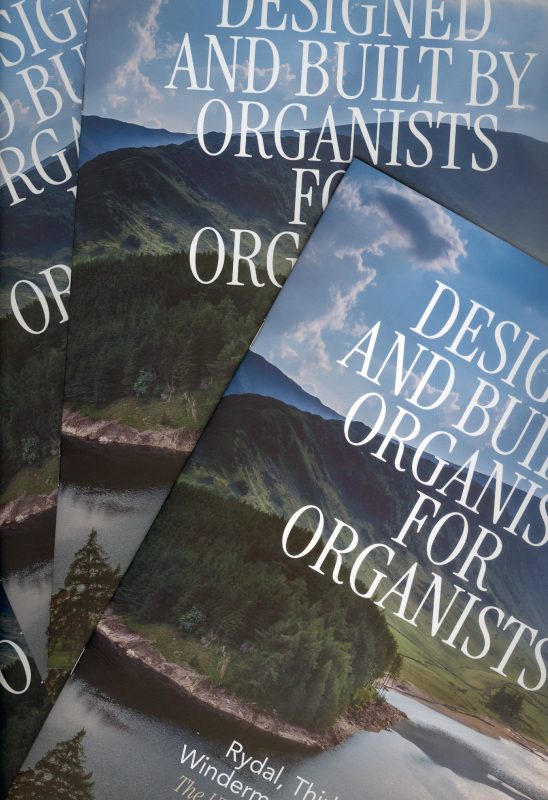Please contact us to receive a copy of the wonderful new Makin brochure which provides full details of these recently released organs which everybody is talking about.
Named after lakes in the Lake District as an acknowledgement to Makin Founder Mr John Pilling (1915 – 1996) who lived in and loved the Westmorland area, the Rydal 2-25, Thirlmere 2-36, Windermere 3-53 and Derwent 4-68 are all in beautifully designed and built consoles, with specifications designed by Professor Ian Tracey (Liverpool Cathedral) and Dr Keith Harrington (Managing Director). Much time was spent on the development of the ergonomic design of the consoles to ensure the best playability possible; everything is designed to be in the correct place, within easy reach and for simplicity of use.
The discerning English organist has a list of functions which are not shared by organists from other international schools but which are seen as essential here. Examples of these include octave/suboctave couplers, the ‘Great & Pedal Combinations Coupled’ facility, stops in columns of two (never three) and a plethora of divisional as well as general pistons. These of course have been included as standard on all our instruments for many years but in these releases we have also included many new options such as a Great Reeds on Choir transfer on the Windermere, separate divisional and general piston memories on drawstop organs and much, much more.
The new range comprises:-
- Rydal 2-25, Tabstop only, internal or external speakers
- Thirlmere 2-36, Tabstop and Motorised Drawstop, external speakers only
- Windermere 3-53, Tabstop and Motorised Drawstop, external speakers only
- Derwent 4-68, Motorised Drawstop only, external speakers only
The instruments use the market leading DS-Core hardware and software platform as designed and built by the Global Organ Group which utilises many new and improved live samples from actual pipe organs. Following audio equalisation, note by note, stop by stop voicing is performed by Ian and Keith to deliver to customers the best in the English digital organ sound.
These instruments have everything needed for an English organ sound such as lush swell strings, flutes of all timbres, luxurious diapason choruses, mutations galore and thrilling solo reeds. The foundations of the sound are provided by a significant pedal division, including multiple 16′ flue stops, that delivers a punch at all pitches.
Seeing is believing. Hearing is believing.


